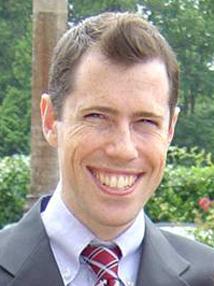23 Feb Vaginal Seeding After C-Section Can Transfer Harmful Germs To Baby
MedicalResearch.com Interview with:
Dr. Aubrey Cunnington
Faculty of Medicine, Department of Medicine
Clinical Senior Lecturer
Imperial College, London
Medical Research: What is the background for this study? What are the main findings?
Dr. Cunnington: We noticed that increasing numbers of women who were having Caesarean section deliveries at our hospitals were requesting for their vaginal fluid to be swabbed onto their babies after birth – a process often termed “vaginal seeding”. The idea behind this, is that it transfers all the natural bacteria (microbiota) from the mother’s vagina to the baby. We know that early on in life, babies born by Caesarean section have different bacteria living on their bodies and in their guts to those of babies born by vaginal delivery. Some people think these differences in the microbiota may be responsible for differences in long-term health, although a causal link is unproven. The hope is that vaginal seeding might reduce the risk of the baby developing some diseases like obesity and asthma in the future. Unfortunately we are a long way from having the evidence to show that this is possible, and we do not know whether vaginal seeding is really safe. Babies born by elective Caesarean section are at lower risk of transfer of some potentially harmful bacteria and viruses from the birth canal, but these harmful bacteria and viruses could be transferred to the baby on a swab and potentially cause a devastating infection.
MedicalResearch.com Editor’s note: ‘Vaginal Seeding’ is also known as “microbirthing”,
Medical Research: What should clinicians and patients take away from your report?
Dr. Cunnington: We have advised doctors and midwives in our hospitals that they should not perform vaginal seeding. However mothers may wish to perform the procedure themselves. We would advise them to think carefully and discuss with their doctor about the potential benefits and risks. We would also advise the parents of any baby who has received vaginal seeding to make sure that they mention this if the baby becomes unwell. Clinicians may modify their assessment of risk of serious infection, if they know that a baby born by Caesarean section has received vaginal seeding.
Medical Research: What recommendations do you have for future research as a result of this study?
Dr. Cunnington: There is already an enormous amount of research going on to study the microbiota, and some excellent research which shows that vaginal seeding can partially alter the microbiota of babies born by Caesarean section to make it look more like the microbiota of babies born by vaginal delivery. It will take a long time to establish whether vaginal seeding produces any health benefits, and whether these benefits outweigh any potential risks. Clearly these studies need to be done sooner rather than later. These studies should also take into account the effects of breast feeding and antibiotic exposure on the developing microbiota, and assess the potential benefits of vaginal seeding in the context of these modifiers.
Medical Research: Is there anything else you would like to add?
Dr. Cunnington: The full article is available at: thebmj.com
Citation:
“Vaginal seeding” of infants born by caesarean section
[wysija_form id=”5″]
Dr. Aubrey Cunnington (2016). Vaginal Seeding After C-Section Can Transfer Harmful Germs To Baby
Last Updated on February 23, 2016 by Marie Benz MD FAAD

